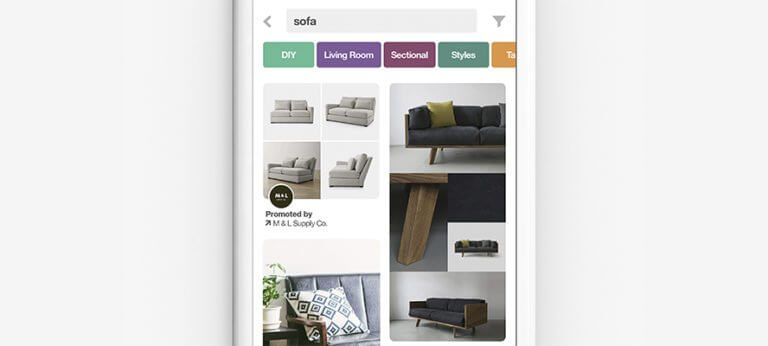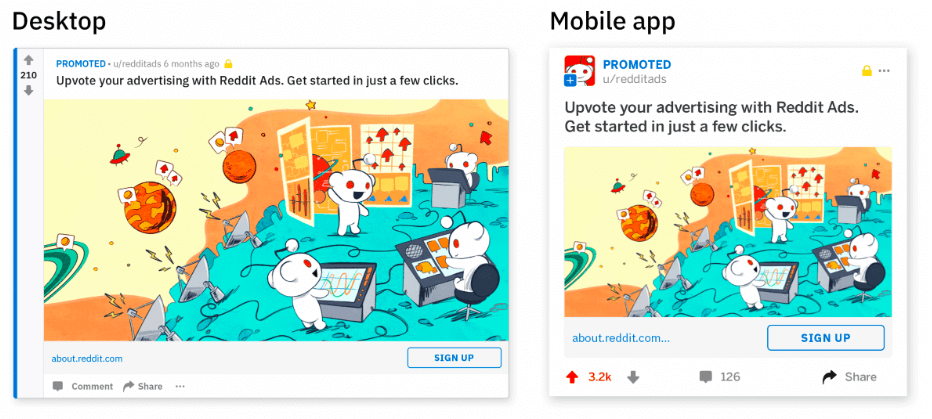As online shopping continues to boom, so does the need for online product marketing to increase product visibility. And while channels like Google and Facebook are great for gaining momentum and boosting traffic to online product listings, your marketing efforts shouldn't stop there. Believe it or not, even the biggest channels can't reach every audience out there. In order to maximize your reach and drive sales, your marketing needs to span far beyond Facebook and Google users. In this article, we'll explain why this is the case and which alternative channels you might want to consider.
Reasons to consider Facebook & Google ad alternatives for product marketing
While Google and Facebook are by far the most well-known advertising mediums, they won’t work for every business. Here are a few reasons why you might consider leveraging alternative channels:
- __High costs:__ Facebook and Google are quite expensive in comparison to their lesser-known competitors like Bing Ads, for example. The average small business user spends between $9,000 and $10,000 a month on Google Ads, which can be a bit too much for some advertising budgets. The same goes for Facebook. According to Forrester, the average price per ad on the social network increased by 17% in Q2 of 2018 alone.
- __Heavy competition:__ These two prominent product marketing sites are also known for their abundance of advertisers, which means competition can get fierce, especially on Google Ads. Since Google Ads runs on a PPC model, you’re competing against the hundreds of thousands of fellow advertisers for a better position in the search engine results pages. This can lead to a high cost per click and a low click-through rate. Meanwhile, according to Facebook, the social network boast more than 6 million active advertisers.
- __Increased product visibility:__ Expanding to advertising channels in addition to Facebook and Google can only widen your reach and put your product in front of more consumers. The more channels you included in your online advertising strategy, the more traffic that you’ll bring to your product listings.
- __New & Niche audiences:__ While Facebook and Google both have audiences in the billions, there has been some privacy-related backlash that has lead users to seek alternative sites for product marketing. Channels like DuckDuckGo were created as a way for users to search without being tracked. On the other hand, advertisers looking for certain niche audiences may find Google and Facebook too broad. Websites like Etsy or Pinterest, for example, may result in a higher CTR for advertisers of creative products.
By now you’re hopefully wondering what else is out there? That’s why we’ve put together a list of 6 lucrative online marketing channels that have nothing to do with Google or Facebook. Whether you’re looking for a more budget-friendly channel, less competition, or a wider reach, these channels are a great place to start.
1. DuckDuckGo
DuckDuckGo is a search engine alternative to Google, offering its users the ability to search without being tracked. Like Google, it is often a starting point for users performing initial product searches. Advertising on DuckDuckGo takes the form of PPC-based sponsored links, which allow advertisers to boost their link to the top of the search engine results page. Here is what they look like:

DuckDuckGo ads are syndicated through Yahoo! as part of the Yahoo-Microsoft search alliance. This means that when you sign up for a Bing Ads account, your ads will automatically be shown on DuckDuckGo as well.
Audience: Users with a strong interest in technology and concerns over their data privacy.
Growth & Popularity: 22% growth YoY, 9+ billion direct search queries in 2018
2. Bing Ads
Bing Ads is a popular and powerful alternative to Google Ads (formerly Google AdWords). Ads can appear across the Bing Network which includes Yahoo!, AOL, and Bing Search as well as MSN.com and other partner sites. In total, the Bing Network boasts 137 million unique searchers, including 66 million that Google can’t reach. Bing Search is the second largest search engine in the US following Google.
Bing Ads are a pay-per-click based ad format, just like Google Search ads. Advertisers can bid on keywords based on how much they are willing to pay for a click. The goal is to get your search result to the top of the search results page in an effort to gain more clicks, traffic, and ultimately, more product sales. Here is what these ads look like on the different search engines:
Ads appear among organic search results and look similar to organic listings. The only difference is a small note indicating that it is an ad.
- __Bing Search:__

- __Yahoo Search:__

- __AOL Search:__

Audience: Bing searchers are often high income (with nearly one-third of its Canadian users earning $100k+ per year) and generally over the age of 35.
Growth & Popularity: 17% growth YoY, 1.2 billion unique monthly global visitors. In 2019 Bing and Verizon Media announced a strengthened partnership, one highlight being that all ad campaigns on both Yahoo and AOL will now be served directly through Bing Ads. This means businesses can now advertise across the Bing Network via a single, centralized ad platform.
3. Pinterest
Pinterest is a discovery engine that allows its 200 million monthly active users to search, share, and post inspiring images and videos, known as Pins. 77% of Pinterest users have discovered a new brand or product using the website—which makes this a perfect opportunity for advertisers to reach new customers. With a highly unique concept and user base, Pinterest provides online marketers with a portfolio of creative advertising opportunities.
Pinterest Search Ads allow advertisers to target keywords and reach new customers as they search for products or ideas on Pinterest. Here is what they look like:

Pinterest Shopping Ads are a feed-driven ad format that allows advertisers to create Pinterest posts in bulk using a product data feed. These ads also work via keyword targeting. See an example below:

Both of these ad formats and many other marketing possibilities can be set up within Pinterest Ad Manager.
4. Reddit
Reddit, which refers to itself as “the front page of the internet,” is a social news and content sharing site. It is made up of 1+ million individual discussion forums focusing on all types of topics from automotive and music to gardening and traveling. Here, it’s 330 million monthly active users can post, share, comment, and upvote (similar to “like” on Facebook) all forms of content including links, text, images, and videos.
Advertising on Reddit is done through what it calls Promoted Posts. These posts share the same elements with and appear among standard, non-sponsored Reddit content. Advertisers can target by location, subreddit, device, or interest. Users can engage with Promoted Posts in the same way as the regular posts. The ads can include a link, video, or just text. Here’s what they look like:

Audience: Studies suggest that Reddit users are tech-savvy and have access to higher education. That said, millions of topics are covered on the website and each subreddit caters to its own unique audience. Keep in mind that, like on DuckDuckGo, Reddit users are more cautious about ads and data privacy. Therefore, you’ll want to read up on the best practices before diving in.
Growth & popularity: Over the last decade Reddit has exploded in popularity. Here’s how many subreddits have been added in the last ten years.

5. Snapchat
Snapchat is a multimedia messaging app that is used by more than 186 million people around the world daily. Launched in 2011, the photo and video-based app was quick to gain popularity, especially amongst US teenagers.
It works by allowing its users to post and interact with photos and videos and use advanced filtering options as well as virtual reality. If you’re familiar with Instagram Stories, Snapchat is pretty easy to understand, as it is very close to the same thing.

On Snapchat, advertisers can target audiences by interests and behaviors, demographics, or location. Just like on Facebook, they can also create custom and lookalike audiences. One of the many Snapchat campaign objectives is Catalog Sales, which is used by brands and online retailers to drive product sales.
Snapchat offers a variety of different feed-based ad formats including Snap Ads, Collection Ads, and Story Ads. Brands can even customize their own creative overlay for users to place over their own images.
Collection Ads are shoppable ads that make it easy for users to purchase your products. See the example below:

Audience: According to eMarketer, 16.4 million 12 to 17-year-olds used Snapchat in 2018 compared to only 12.8 million on Instagram and 11.5 million on Facebook.

Growth & popularity: In the same report, eMarketer suggests that Snapchat will continue to add 1.2 million additional teenage users by 2022, while Facebook will lose 2.2 million.
6. Criteo
Criteo is a customizable display advertising and retargeting company. It works by serving personalized ads to consumers who have already visited an advertiser's website. Available in 30+ markets across the globe, Criteo is a key channel for companies looking to retarget almost-buyers.
Criteo Display Ads are powered by a product feed. You’ll also need to grant Criteo pixel-access to your website. Just like the Facebook Pixel, this allows them to track your website visitors so they know who to target and when. With a huge portfolio of unique publishers, Criteo allows advertisers to target shoppers wherever they are.
Here are a few examples of ads served by Criteo:

Audience: Criteo serves your ads to shoppers who have previously visited your website or left an item in your cart. Therefore, your ad audience will already be interested in your products to some extent.
Growth & popularity: According to the company’s Q1 2018 financial report, Criteo is growing steadily and continues to lead in the retargeting sector.
At the end of the day, these channels, as well as Facebook and Google, are all beneficial to include in your online marketing strategy. In this day and age, it is incredibly important to leverage as many channels as possible to expand your reach, to re-engage customers, to win new customers, and to meet consumers wherever they are.
In order to serve the best ads, a high-quality product feed is key. With the right feed management tool, getting on all of these channels, and more is a piece of cake.

![[WP Import] 6 alternative product marketing sites beyond Facebook and Google](http://images.ctfassets.net/q17uls4wkkdz/6ZPsAH3oJI9doNKGcr2rBo/45b4518eb22504c1899e6e4a14602fa6/1902-6_advertising_alternatives_ft_image.jpg)